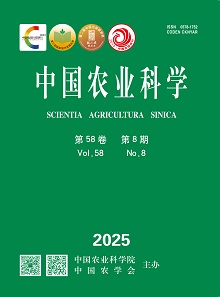|
|
Advances in Research of Transcriptional Regulatory Network in Response to Cold Stress in Plants
LIU Hui, LI De-jun, DENG Zhi
Scientia Agricultura Sinica
2014, 47 (18):
3523-3533.
DOI: 10.3864/j.issn.0578-1752.2014.18.001
Cold stress seriously influences plant growth, development, and crop yield. In order to survive, plants have evolved complex and high-efficiency regulatory networks to respond and adapt to cold stress. Among these regulatory networks, transcriptional regulation plays crucial roles. Transcription factors can regulate a set of genes by binding to cis-acting regulatory elements in the promoter regions, and play crucial roles in abiotic stress-responsive transcriptional regulatory network in plants. In this review, the authors comprehensively summarized the transcription factors involved in regulating plant response to cold stress, including AP2/ERF (APETALA2/ethylene responsive factor), MYB (myeloblastosis), bHLH (basic helix-loop-helix), NAC (NAM, ATAF1, ATAF2 and CUC2), ZFP (zinc finger protein), WRKY, VOZ (vascular plant one zinc-finger protein), CAMTA (calmodulin-binding transcription activator), and EIN3 (ethylene-insensitive 3). Their structure characteristics were simply summarized, while their functions and regulatory mechanisms were emphatically introduced. Based on the relationships among transcription factors, a transcriptional regulatory network diagram of plant response to cold stress was draw. In this network, CBF (C-repeat binding factor) transcription factors are considered as master molecular switches. CBFs specifically bind to the DRE/CRT (dehydration-responsive element/C-repeat element, A/GCCGAC) cis-acting regulatory element of the promoter region of the cold-responsive genes, such as COR (cold regulated), LTI (low-temperature induced), DHN (dehydrin), RD (responsive to dehydration), etc, and activate their expression. The expression of CBFs are positively regulated by ICE1/2 (inducer of CBF expression 1/2), CAA1 (circadian clock-associated 1), LHY (late elongated hypocotyl), MYB56, ZFP1/182, and CAMTA1/2/3, whereas negatively regulated by MYB15, MYBS3, ZAT12, PIF4/7, WRKY34, and EIN3. The transcriptional activity of ICE1 protein is strictly regulated by post-translational modification, including SIZ1 (SAP and Miz 1)-mediated SUMO (small ubiquitin-related modifier) modification and HOS1 (high expression of osmotically responsive gene 1)-mediated ubiquitination. The HOS1–SIZ1 system strictly regulates and perfectly fine-tunes the expressions of ICE1–CBFs and their targets to cope with temperature change. Moreover, the expression of ICE1 is negatively regulated by JAZ1/4 and positively regulated by ERF2. Except the CBF-dependent cold-response pathway, some transcription factors regulate responses of plant to cold stress through CBF-independent pathways, such as JERF3, MYB2/4/96/3R-2, WRKY19/21/76, NAC1/2, SAP1/8, etc. Uncovering transcriptional regulatory network in response to cold stress in plants provide a theoretical basis for improving the cold tolerance of crops through transgenic technology. Transgenic studies indicate that some transcription factors possess potential usefulness in genetic improvement of cold stress tolerance in plants, such as AtCBF1–AtCBF3, AtICE1, AtCCA1α, TaCBF14/15, TaNAC2, TaWRKY19, VrCBF1/4, MdCIbHLH1, PtrbHLH, OsMYB2, GmNAC20, JERF3, and ZFP182. Furthermore, the main problems in current researches and the key points in future studies were also proposed, in hope of providing reference for further revealing the molecular mechanisms underlying plant adaptation to cold stress.
Reference |
Related Articles |
Metrics
|
|











